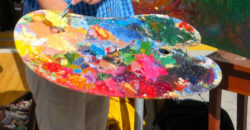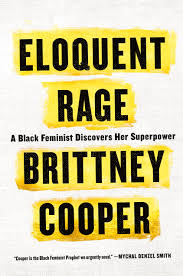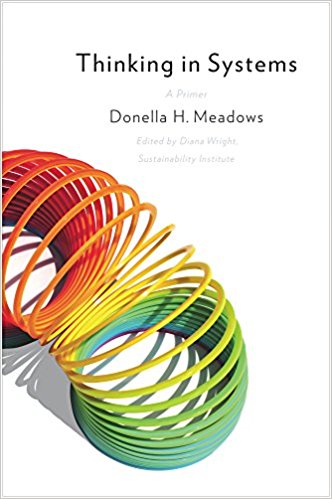Yield to aircraft
“Life is one big road with lots of signs. So when you are riding through the ruts, don’t complicate your mind.” – Bob Marley
 I’m intimately familiar with the Cincinnati-Northern Kentucky International Airport. Franny in Laptop Lane greets me by name; the store Toto sells good greeting cards; Starbucks is near gates 40-69; the restaurant near the information booth in Terminal C isn’t worth waiting in line for; the blonde-haired agent at Gate 56 is chronically mean-spirited, and even more so when it is raining, the barometric pressure is high, or it’s a day of the week that ends with the letters “d-a-y.”
I’m intimately familiar with the Cincinnati-Northern Kentucky International Airport. Franny in Laptop Lane greets me by name; the store Toto sells good greeting cards; Starbucks is near gates 40-69; the restaurant near the information booth in Terminal C isn’t worth waiting in line for; the blonde-haired agent at Gate 56 is chronically mean-spirited, and even more so when it is raining, the barometric pressure is high, or it’s a day of the week that ends with the letters “d-a-y.”
Last week, I took the shuttle bus from Terminal A to Terminal C for my connecting flight, a trip usually done on autopilot: I roll my L.L. Bean Dark Green Medium Adventure Duffle with the Telescoping Handle and Smooth-Glide Wheels aboard the shuttle, stand looking at people and making up funny, yet poignant stories about their lives inside my head until they catch me looking, then disembark. This time, though, I paid attention to the trek. I watched, trying to decipher the rhythm of the airfield, the ebb and flow, the intricate dance of weary travelers across asphalt, all those service vehicles darting to and fro.
As we lumbered toward the terminal, I noticed all manner of messages painted right onto the ground, instructing shuttle bus drivers and baggage carts and little catering trucks carrying small vacuum sealed packets of peanuts and not much else as they move around the airfield. There were the usual: “Stop.” “Right turn only.” “One way.” Signs that reflect symbols that reflect commonly understood social rules of conduct, ways of being together in the world, making life predictable and safe.
But as I looked at the asphalt speeding under us, I saw a sign that made me laugh out loud, much to the surprise of my fellow strap-hangers intent on disengagement. The sign read, simply, “Yield to Aircraft.”
“Well, yes, indeedy, that sounds like mighty fine advice to me,” I thought to myself as I smiled. “After all, who might win? A 26-passenger shuttle bus or a 545,000 pound, 440 seat, 209-foot long Boeing 777 aircraft?”
 Yield to aircraft.
Yield to aircraft.
It seems obvious, doesn’t it? Yet, like ubiquitous product warnings, perhaps it is there because someone didn’t yield to aircraft. “This liquid is very hot” became standard reading on coffee cup lids because a woman dropped her coffee (to say it was hot is a tad redundant, don’t you think?) in her lap at a McDonald’s drive-through and sued (and worse yet, won); I hate to think what awful mouth-shrinking event resulted in “Do Not Use Orally” being printed on each box of Preparation H hemorrhoid cream…but I digress.
I cocked my head to the side, en route to Terminal C. Yield to aircraft. Is it possible that this advice applies to life, too?
Slow down, look around, make sure there isn’t a 545,000 pound, 440 seat, 209 foot long Something bearing down on me. If there is, perhaps the best course of action is to yield to it, for goodness sake; I can minimize the damage by not driving straight into its path. Perhaps I should take a little vacation in the islands until it passes on by, for example.
Obviously, there are times when fighting the 545,000 pound gorilla (inequity, discrimination, abuse, low-fat foods that are not really low-fat) is the only way, the right way, the hard but necessary way, the way that must be taken at any cost. But as I contemplated the wisdom of the sign, I realized that I’ve often moved into the path of an “aircraft” when yielding to it would have made more sense, when I didn’t need to do that, when it was more hurtful to me than helpful to others, when slowing and yielding was the healthiest thing to do. Perhaps I even threw myself into the path of the “aircraft” so others could save me, or see me save myself. It’s possible.
So, that simple sign not only made me laugh; it got me to thinking about symbols, signs, paths of least resistance.
Signs are all around us—can we see them, read them, understand them? Do we know that the signs we see are simply referential to reality, not reality itself?
 Perhaps obvious signs aren’t obvious, like yielding to aircraft or "Steep Drop Beyond Wall." You think?
Perhaps obvious signs aren’t obvious, like yielding to aircraft or "Steep Drop Beyond Wall." You think?
 Sometimes I see signs, but can’t read them—like being in Hong Kong for the first time without Chinese language skills, bewildered, lost, afraid—not knowing what even the simplest of signs meant, unable to place myself in a cultural, known context that would make sense to me. When I can’t read the signs, I feel fearful and less myself; I pull myself in, I protect my ignorance, my confusion.
Sometimes I see signs, but can’t read them—like being in Hong Kong for the first time without Chinese language skills, bewildered, lost, afraid—not knowing what even the simplest of signs meant, unable to place myself in a cultural, known context that would make sense to me. When I can’t read the signs, I feel fearful and less myself; I pull myself in, I protect my ignorance, my confusion.
And sometimes there are just too many signs, like street posts in D.C. with 14 signs, some seemingly contradictory, pointing to different places at the same time, regulating parking on alternate rainy Thursdays—too much to take in too quickly; again, slowing down would help us read the signs and avoid a wrong turn, but everyone is honking, the pressure is too great, we speed past, straight into the path of the airplane.
I see signs everywhere, in the smallest of glances; they point beyond themselves to something else. It is the “something else” that is important to me, that I want to find or see, that bears understanding.
 As Paul Tillich said (Won’t Mel Keiser, my religion professor from Guilford College, be proud that I remembered Paul Tillich?!), “The red sign at the street corner points to the order to stop the movements of cars at certain intervals. A red light and the stopping of cars have essentially no relation to each other, but conventionally they are united as long as the convention lasts. The same is true of letters and numbers and partly even words. They point beyond themselves to sounds and meanings.”
As Paul Tillich said (Won’t Mel Keiser, my religion professor from Guilford College, be proud that I remembered Paul Tillich?!), “The red sign at the street corner points to the order to stop the movements of cars at certain intervals. A red light and the stopping of cars have essentially no relation to each other, but conventionally they are united as long as the convention lasts. The same is true of letters and numbers and partly even words. They point beyond themselves to sounds and meanings.”
And, like words, symbols frame reality in a certain way, don’t they? My word becomes my reality; I frame reality in a certain way by the signs and symbols I use and those I pay attention to—either positive and negative, either “yes, and” or “yes, but.”
Years ago, I interviewed a young man who had created a new access symbol, changing the static wheelchair figure omnipresent in “handicapped” parking signs to something more fluid and active, an image featuring a person in a wheelchair moving through an open door. In so doing, he framed the chair as a tool for movement, the open door a symbol of possibility, rather than being closed down, bound by the chair, static and still. He reframed our feelings about people in wheelchairs in the process, and perhaps their own sense of themselves as well. Reframing the signs.
“To understand
The signs that stars compose, we need depend
Only on stars that are entirely there
And the apparent space between them. There
Never need be lines between them, puzzling
Our sense of what is what.”
John Hollander
 What if our street signs were different, I wonder? What if we found ourselves at the corner of Peace and Patience more often?
What if our street signs were different, I wonder? What if we found ourselves at the corner of Peace and Patience more often?
I read signs daily: the hydraulic system failing on a plane trip is a sign that I should stop working with the man traveling with me and change my life, recurring migraines are a sign that I should leave my job, a book featuring an essay about my dad arriving on the anniversary of his death is a sign that Daddy knows, that life is somehow more than arbitrary.
Or not.
Signs are my sense-making tools. They, like objects in my home, are referential to some meaning in me quite unrelated to the sign, the thing itself.
~*~ 37 Days: Do it Now Challenge ~*~
 Read the daily signs; pay attention to the Big Ones; discard some.
Read the daily signs; pay attention to the Big Ones; discard some.
Sure, there will be some signs we miss; there will be others whose symbols and meaning we misread; there will be signs that we ignore—and there are signs that, honestly, aren’t significant, not in the long term.
Just don’t ignore the big ones, the aircraft ones, the smoosh-you-into-the-runway ones. Pay attention to the signs around you—see them, read them, make meaning of your life through them, and yield to aircraft.







